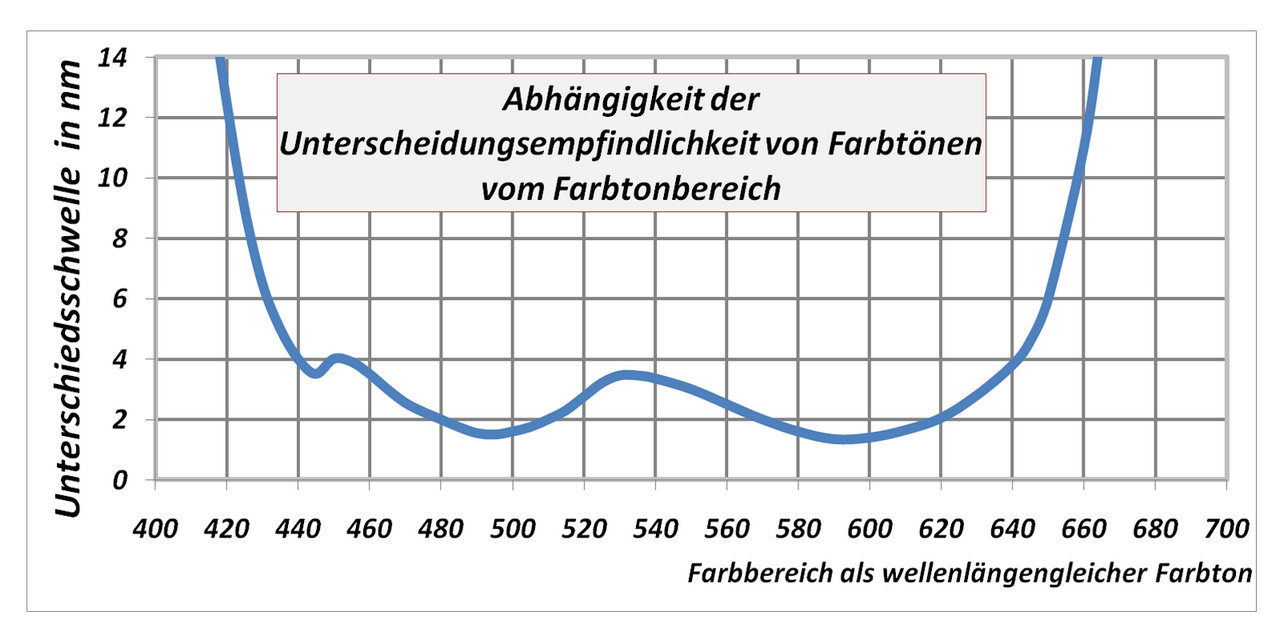The Bezold–Brücke shift is a change in hue perception as light intensity changes. As intensity increases, spectral colors shift more towards blue (if below 500 nm) or yellow (if above 500 nm). At lower intensities, the red/green axis dominates.
This effect is a problem for simple HSV-style color models, which treat hue and intensity as independent parameters. In contrast, color appearance models try to factor in this effect.
It was discovered by Wilhelm von Bezold and M.E. Brücke.
The phenomenon
The color distinction, or more precisely the color distinction, in the human eye depends on the luminance. At very low luminance, a color stimulus between 380 nm and 480 nm produces a blue-violet, between 480 nm and 570 nm a green and between 570 nm to the long-wave visibility limit at 760 nm, a red color valence. As the luminance increases, the distinction becomes better: at about 0.0015 cd / cm² to 1 cd / cm², it is possible to distinguish between 160 spectral hues and 30 purple shades in addition. The distinction improves with further increase in luminance, but decreases again at high density. In the blend area only a whitish yellow and a whitish blue violet are perceptible. Some subjects can only perceive a bright light. This phenomenon is referred to as Bezold-Abney’s phenomenon. The background of this dependency is due to the different photosensitivity of rods (scotopic or night vision) and the pin of the eye, which is also susceptible to color irritation (photopic or daytime vision).
Number of theoretically possible colors
To estimate the number of possible “visible” colors, the saturation and the brightness are also to be considered. The number of perceivable saturation levels for the normal observer, in turn, depends on the hue, for example, given as “wavelength of the same color”, and is highest in the green range. The number is approximately between 4 and 25. The brightness can be a few hundred levels specify. The number of theoretically possible colors thus amounts to several hundred thousand. However, in real terms about 10,000 to tens of thousands of color tones, saturation and brightness distinguishable color shades are possible, but are still dependent on other factors, such as ambient light, mental preload, waking state, coloristic exercise.
For Italian mosaic workers 30,000 distinguishable shades are mentioned.
